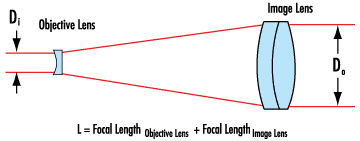IsaacT
0
- Joined
- Aug 25, 2010
- Messages
- 5,947
- Points
- 83
Instead of paying 80 bucks, go to optotronics dot com and go to their lenses section....get a convex and a concave, try to make the focal length very different. The farther the focal lengths are apart, the bigger Magnification Power, or MP, or the beam expander and as a result, a lower divergence. The space required between the lenses is the sum of the focal lengths. Watch out for negative focal lengths.
For example, they have a
-500mm focal length and a 85mm focal length, so if my calculations are correct, there should be 415mm between them. You are going to want the concave lens as the objective lens(front/closest to laser) and the concave as the image(back/farthest from laser), if you do it the otherway, there will be a focal point in between them and the point will heat the air, causing issues. Having the concave first means no focal point, and no heat.
For example, they have a
-500mm focal length and a 85mm focal length, so if my calculations are correct, there should be 415mm between them. You are going to want the concave lens as the objective lens(front/closest to laser) and the concave as the image(back/farthest from laser), if you do it the otherway, there will be a focal point in between them and the point will heat the air, causing issues. Having the concave first means no focal point, and no heat.






